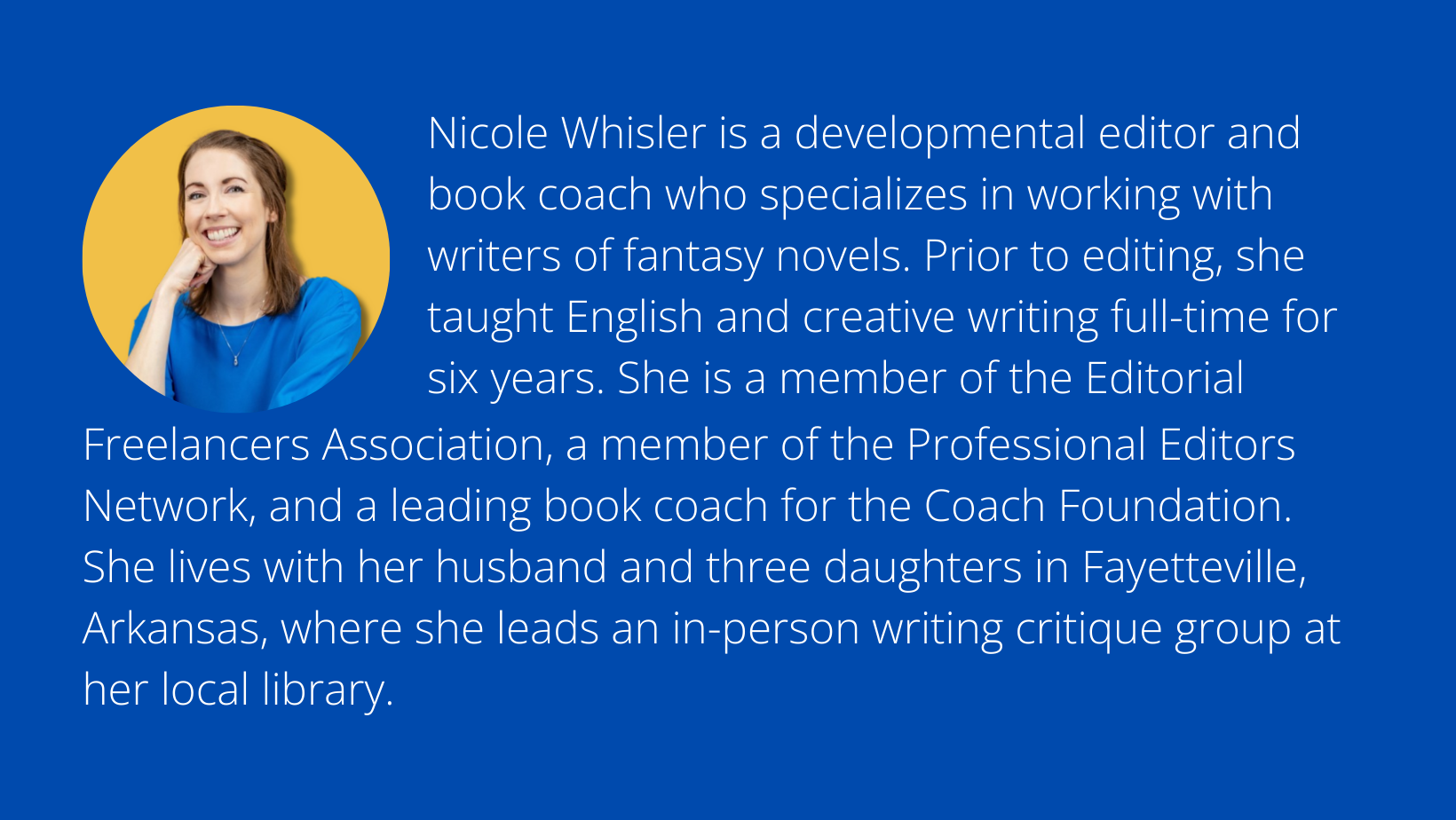Whisler Edits Blog

Premise vs. Plot: Don’t Let Your Story Idea Fizzle Out
Discover in this post …
the difference between premise and plot.
examples to illustrate that difference.
how knowing the distinction can help you on a practical level.
A Promising Premise
Have you ever started writing a novel only to doubt whether it has enough promise to continue? How far were you in your project? In the brainstorming stage? On Chapter 4?
Or worse—halfway through the book?
When ideas fizzle out and we stop writing, it might be for a variety of reasons. But often, the problem isn’t with the idea. The problem isn’t that we chose the “wrong” concept to write about, that the product of our imagination is inherently flawed. Rather, the problem usually stems from not taking the time to fully flesh out our original idea—to turn our premise into a plot.
Let’s define each term to make sure we’re on the same page, then look at an example.
Premise = the specific situation on which a story is based
Plot = how the writer chooses to unveil the consequences of that situation on the characters
Premise and plot aren’t interchangeable. If you’re the type of writer who leaps from idea to idea, constantly reaching for something better or more exciting, first take a look at your premise to see if you fully fleshed out your idea from the start.
Examples of Premise vs. Plot

This concept is somewhat hazy until we talk specifics. So let’s dive in! Decide whether you consider the following paragraph a premise or a plot:
“For the past decade, fourteen-year-old Gabby LaRue has been shunted around to different foster homes in her magical community. Since her caretakers never seem fond of her, she doesn’t think highly of them either. In fact, she prides herself in stealing one magical item from every residence in which she has lived—and she’s never caught. But in her latest home, her caretakers seem different … almost like they’ve met her before. They watch her every move and know details of her background she’s never told them. Gabby swears they’ve even assigned students to befriend her at her new magical school.”
What do you think? Premise or plot?
If you found yourself asking, “... And? So what?” about Gabby’s situation, you’ve stumbled upon the exact method to distinguish between the two terms. The above description about Gabby is a premise, not a plot. It provides a background that will act as the springboard of events to come, but it doesn’t contain the subsequent events themselves.
Consider how many directions you could take the above premise, and consider the possible consequences of each direction. (I’d love to hear your own ideas in the comments!) Here’s the start of three plots, all completely separate, based on the premise above:
Gabby investigates her new caretakers on her own and discovers that they run an underground “circus” of sorts, a weekly performance in which teenagers with uncanny abilities are the stars! But most of the teenagers aren’t there of their own free will, so Gabby attempts to expose the next performance for the trafficking it is—only to discover that the leading stars don’t want to be unveiled after all. They’d rather be left alone. Or better yet … make Gabby disappear. (Now we’ve got a fantasy thriller on our hands.)
Gabby’s new caretakers have tracked her long-term, convinced she possesses a rare magical ability: a talent for finding lost items. They’ve spent years searching for their missing son, so when Gabby confronts them about their odd behavior toward her, they confess everything and beg her to help them find their boy. They strike a bargain: Gabby names a financial sum in return for three months of her help. But Gabby, cold and distant as a result of her upbringing, never expected to fall in love with the missing boy’s family and find belonging of her own. (Now we have a mystery and a theme of what it means to truly belong.)
Gabby’s new caretakers turn out to be her real parents. Long ago, they were magical undercover assassins, a job that placed their immediate family in extreme jeopardy, so they sent Gabby into the foster system as a child, having convinced themselves it was the only way to save their little girl. But the danger is gone at last, and now they want their daughter back. The only problem? Gabby wants nothing to do with them—and the more she finds out about their backgrounds, the more she tries to run the other way. Because they’ve said the past is the past, but Gabby finds new evidence about their activities that contradicts that claim. (Now you’ve got a story that asks questions like, How strong are family bonds? Can you forgive your parents for doing horrible things in the past if they swear they did it all for your safety? Would you turn them in for the illegal acts you believe they’re still committing—or would you look the other way?)
Notice a few items about the expanded plots above:
Each plot identifies what the protagonist wants and what she does to get it. This must be present and clear for your protagonist to move the story forward. (Keep in mind that you could choose to tell the stories above in multiple points of view. You could even tell the third storyline solely from the caregivers’ perspective. If you’re using a single point of view, the protagonist usually works best when they’re the person with the most at stake.)
The plots touch on the theme of belonging (at least the second and third ideas do, and you could integrate a similar theme into the first). When you’re expanding on your premise, consider weaving in your story’s theme. Rather than limiting your plot to what your protagonist wants, include what they need. Their core need will typically relate to the overall theme of your novel. Themes help readers connect to stories on an emotional level. They allow readers to understand not only what is happening, but why it matters.
To get even deeper into your plot, of course, don’t forget to question, question, question. Throw inquiries like the following at your brain, then see if they trigger further ideas:
Why might that happen?
How might my protagonist react to that? What are the consequences?
Who has the most to lose in this situation?
What if XYZ happened too? How would that change the next events?
What potential twists could I include with that?
Now that we’ve identified the key differences between premise and plot, you can expand on your own premise. Unravel it, examine it from different angles, and be sure you’re not missing out on your idea’s hidden potential.
Why Know the Difference between Premise & Plot?

Here are three main advantages to expanding your premise into a plot as early as possible:
The more you understand the consequences that result from your story’s premise, the more questions you’ll ask, the more ideas will occur to you, and the lower the chance your original idea will fizzle out, as I mentioned above. Once you’ve trained your brain to focus on the possibilities, you’ll be excited to get those ideas down on paper—and motivated to continue.
If you intend to publish traditionally, you’ll have the meat of your query letter at the ready. Make sure to include aspects of the plot itself rather than stopping at the premise. Agents don’t want to understand the mere premise of what you’re writing. They don’t want your query letter to stop at the inciting incident, as query letters often do. They want to know how the story unravels and why the inciting incident matters. That alone will help your query stand out!
No matter what type of publishing you’re planning, by expanding your premise into a plot, you’ll have an at-the-ready pitch you can make to your ideal readers, friends and acquaintances who ask about your story, and agents or editors at a writing conference. You can practice it and refine it until you know it by heart. And with familiarity comes confidence.
Have you examined the premise of your story yet? Thought about whether you’ve already developed it into a plot? If not, now is the time!
Thanks for reading! Today I’ve discussed the difference between premise and plot, delved into examples of each, and touched on how unfurling your premise can help you keep your story ideas going strong. How do you approach premise vs. plot in your own writing? Do you tend to expand on your ideas naturally, or do you start with a premise and simply hope you’ll stay motivated and excited as you write? I’d love to hear about your method in the comments!
Do you want to learn how to write a story that makes your target readers stand up and cheer? If you’d like support from A to Z (from brainstorming to drafting to revising to publication), book a Discovery Call with me to see if you’re a good fit to join my book coaching program, Fantasy Footsteps: Road to Publication. And if you haven’t done so already, grab your Free Guide on how to hook readers from your story’s start!

